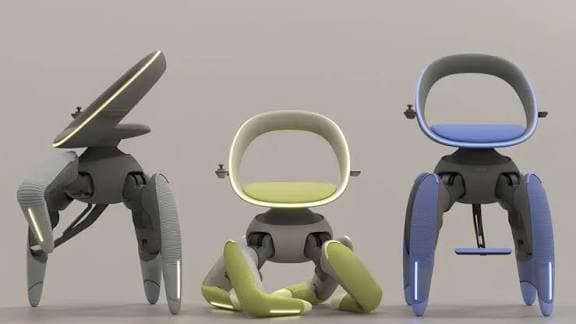Walk Me by Toyota: A legged robot that can climb stairs and fold itself

At the Japan Mobility Show 2025, Toyota unveiled a revolutionary mobility device for people with disabilities — Walk Me. This is not just a wheelchair, but an autonomous four-legged robot that, thanks to its biomimetic design, can climb steep stairs and navigate difficult uneven surfaces, giving users true freedom of movement.
Walk Me differs from traditional wheelchairs because instead of wheels, it uses four robotic limbs whose movement mechanics are inspired by nature (for example, goats or crabs). Such a structure allows the device to maintain perfect balance and stability on any surface — from gravel to steep steps.
Key Technologies:
Sensors and LiDAR: Each leg is equipped with its own set of sensors and a LiDAR system that constantly scans the environment. This allows the robot to move smoothly, automatically adjust balance, and avoid sudden obstacles (like the edge of a carpet).
Voice Control: In addition to traditional handles, voice commands can be used for more complex tasks. Simply saying “kitchen” prompts the intelligent system to automatically choose the optimal route.
Practicality is one of Walk Me’s strongest advantages. The seat is designed for comfort: an ergonomically curved backrest supports the spine, while a compact battery ensures a full day of active use.
The main feature solving the problem of storage and transport is automatic folding. With just one button press, the seemingly bulky device folds in 30 seconds to a size comparable to a piece of carry-on luggage.
Experts note that although Walk Me is still a prototype, it demonstrates a fundamental shift in the assistive mobility device industry. Toyota has shown that the future of mobility is not about improving wheels, but replacing them with intelligent and flexible robotic systems.
ORIENT




